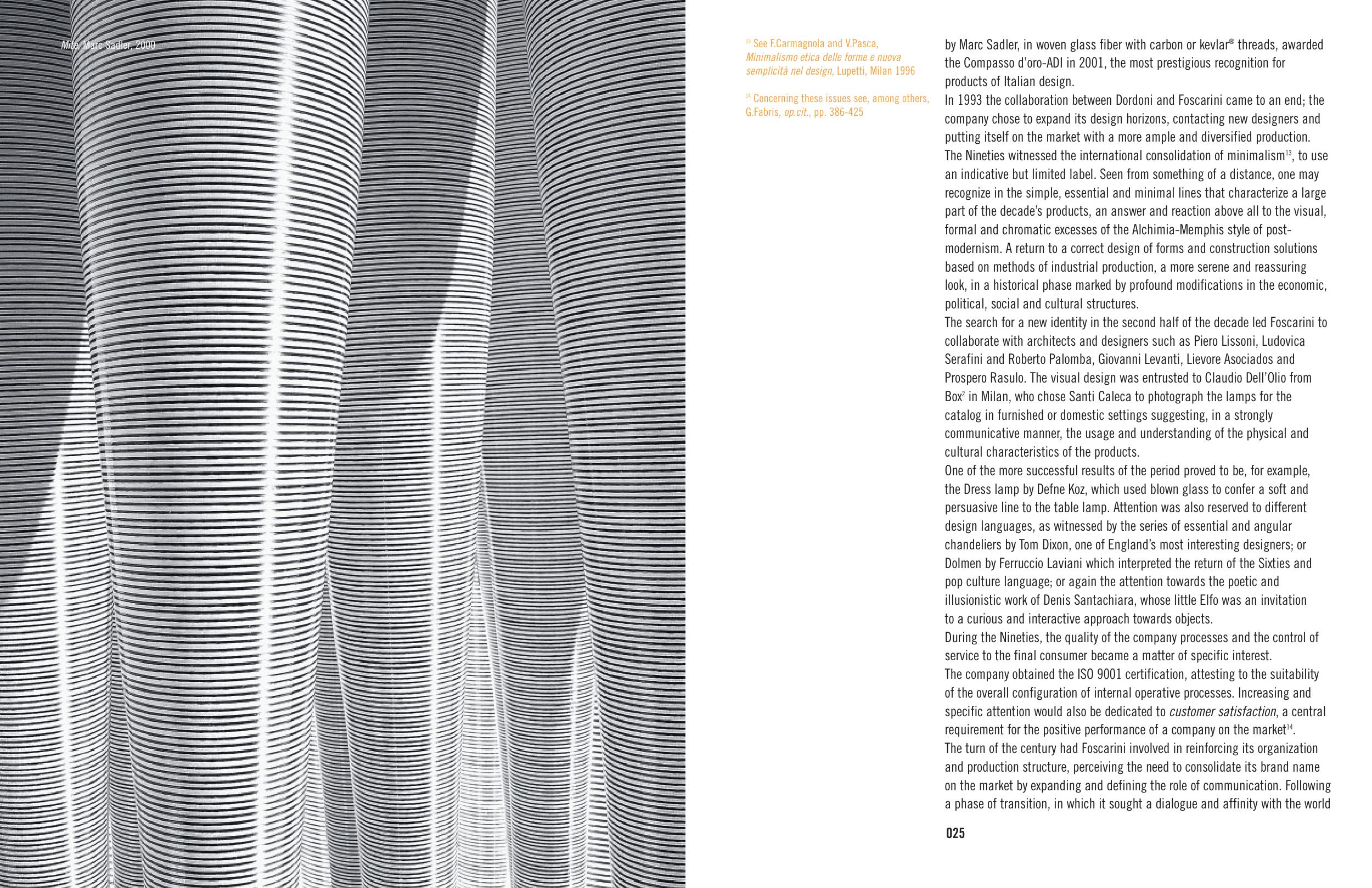025
Mite, Marc Sadler, 2000
by Marc Sadler, in woven glass fiber with carbon or kevlar® threads, awarded
the Compasso d’oro-ADI in 2001, the most prestigious recognition for
products of Italian design.
In 1993 the collaboration between Dordoni and Foscarini came to an end; the
company chose to expand its design horizons, contacting new designers and
putting itself on the market with a more ample and diversified production.
The Nineties witnessed the international consolidation of minimalism13, to use
an indicative but limited label. Seen from something of a distance, one may
recognize in the simple, essential and minimal lines that characterize a large
part of the decade’s products, an answer and reaction above all to the visual,
formal and chromatic excesses of the Alchimia-Memphis style of post-
modernism. A return to a correct design of forms and construction solutions
based on methods of industrial production, a more serene and reassuring
look, in a historical phase marked by profound modifications in the economic,
political, social and cultural structures.
The search for a new identity in the second half of the decade led Foscarini to
collaborate with architects and designers such as Piero Lissoni, Ludovica
Serafini and Roberto Palomba, Giovanni Levanti, Lievore Asociados and
Prospero Rasulo. The visual design was entrusted to Claudio Dell’Olio from
Box2 in Milan, who chose Santi Caleca to photograph the lamps for the
catalog in furnished or domestic settings suggesting, in a strongly
communicative manner, the usage and understanding of the physical and
cultural characteristics of the products.
One of the more successful results of the period proved to be, for example,
the Dress lamp by Defne Koz, which used blown glass to confer a soft and
persuasive line to the table lamp. Attention was also reserved to different
design languages, as witnessed by the series of essential and angular
chandeliers by Tom Dixon, one of England’s most interesting designers; or
Dolmen by Ferruccio Laviani which interpreted the return of the Sixties and
pop culture language; or again the attention towards the poetic and
illusionistic work of Denis Santachiara, whose little Elfo was an invitation
to a curious and interactive approach towards objects.
During the Nineties, the quality of the company processes and the control of
service to the final consumer became a matter of specific interest.
The company obtained the ISO 9001 certification, attesting to the suitability
of the overall configuration of internal operative processes. Increasing and
specific attention would also be dedicated to customer satisfaction, a central
requirement for the positive performance of a company on the market14.
The turn of the century had Foscarini involved in reinforcing its organization
and production structure, perceiving the need to consolidate its brand name
on the market by expanding and defining the role of communication. Following
a phase of transition, in which it sought a dialogue and affinity with the world
13 See F.Carmagnola and V.Pasca,
Minimalismo etica delle forme e nuova
semplicità nel design, Lupetti, Milan 1996
14 Concerning these issues see, among others,
G.Fabris, op.cit., pp. 386-425


